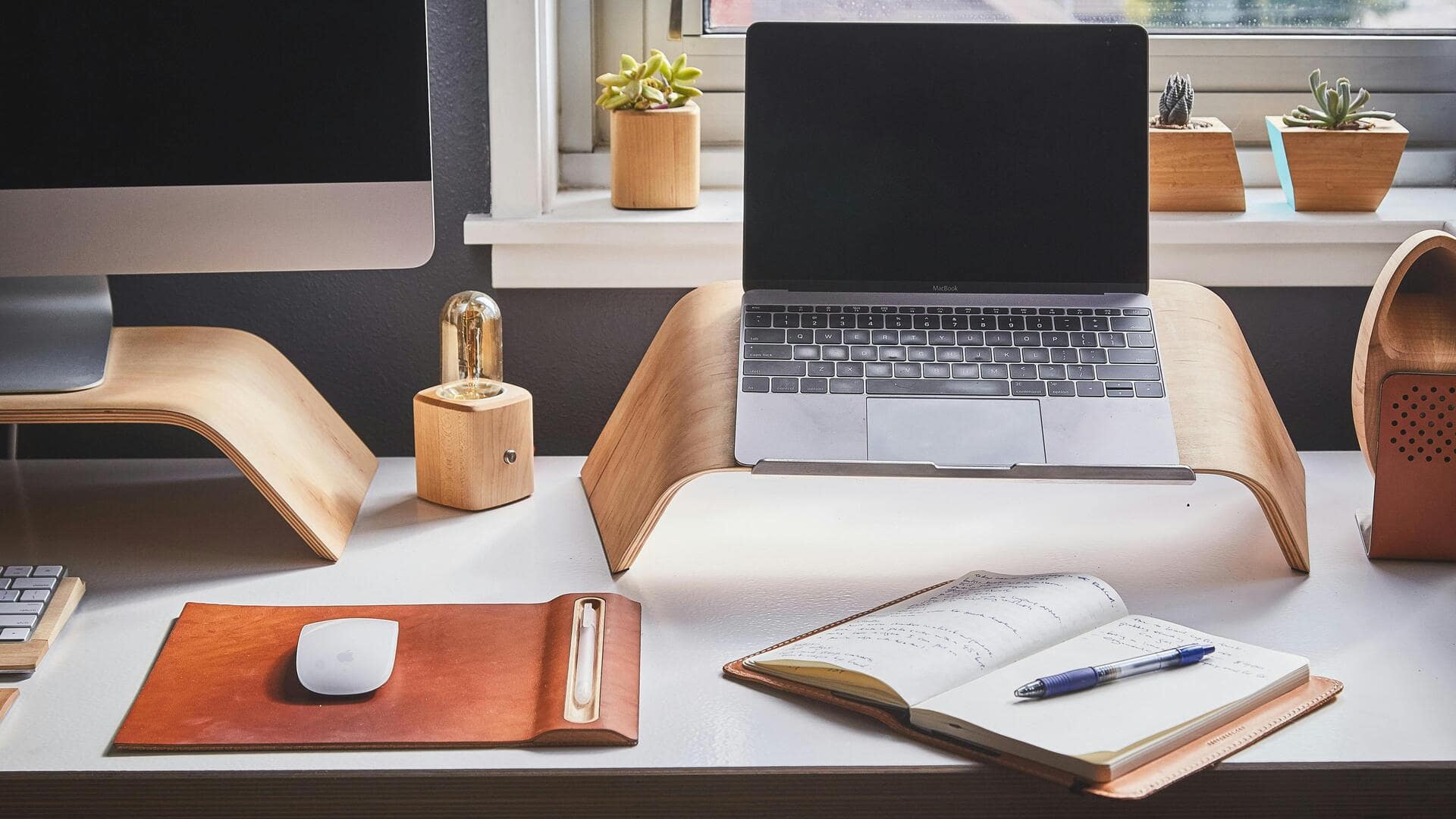
Boost comfort & productivity with this ergonomic desk guide
What's the story
Creating an ergonomic desk setup can significantly enhance productivity and comfort during work hours. By optimizing your workspace, you can reduce the risk of strain and injury while improving focus and efficiency. This guide provides practical tips on setting up a desk that supports your health and work performance. Whether you're working from home or in an office, these insights can help you create a conducive environment for productivity.
Tip 1
Choose the right chair
Selecting a chair that provides proper support is crucial for maintaining good posture. Look for chairs with adjustable height, backrest, and armrests to accommodate your body's needs. A well-designed chair can help reduce pressure on your spine and neck, allowing you to work comfortably for extended periods.
Tip 2
Adjust the monitor height correctly
Positioning your monitor at eye level is essential to avoid straining your neck and eyes. The top of the screen should be at or slightly below eye level, with about an arm's length distance from your face. This alignment helps maintain a neutral neck position and reduces glare from overhead lights.
Tip 3
Organize keyboard and mouse placement
Proper placement of the keyboard and mouse is important to minimize wrist strain. Place them close enough so that you can keep your elbows close to your body while typing or clicking. Your wrists should be straight, not bent upwards or downwards, during use. Consider using wrist supports if needed.
Tip 4
Utilize desk space efficiently
An organized workspace not only minimizes distractions but also improves efficiency. Keep frequently used items within arm's reach to minimize unnecessary movements that could cause strain over time. Use cable management solutions to keep cords tidy, preventing clutter that may distract or cause accidents.
Tip 5
Incorporate movement into your routine
Integrating movement into your daily routine is key to staying healthy while working at a desk all day. Take short breaks every hour to stretch or walk around briefly. This promotes circulation and alleviates muscle tension built up from prolonged sitting.